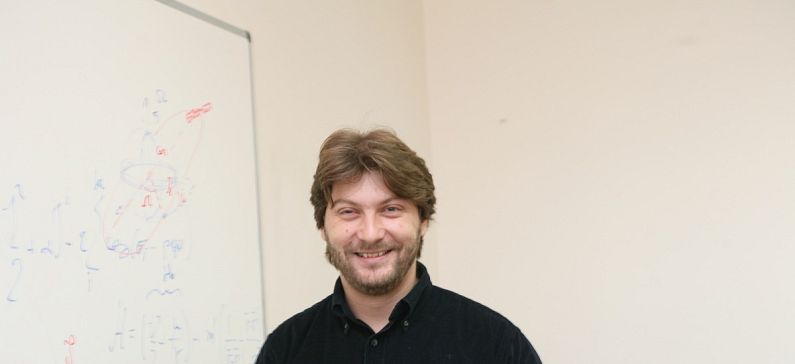
International award for Greek astrophysicist
Dr. Kleomenis Tsiganis, a Greek researcher and associate professor at the Aristotle University of Thessaloniki (AUTh), has been awarded the sixth Paolo Farinella Prize in 2016 for his studies of the applications of celestial mechanics to the dynamics of planetary systems, including the development of the ‘Nice model’ of the evolution of the early solar system.
Before receiving the Prize, Dr. Tsiganis commented: “This is indeed a great honour and motivation, more so because this particular prize carries a very distinguished name and a sentimental value for celestial mechanicians in Europe, and internationally. I would like to thank the jury of distinguished colleagues who decided to award me this prize.”
The award ceremony was hosted today at the joint 48th meeting of the American Astronomical Society’s Division for Planetary Sciences and 11th European Planetary Science Congress in Pasadena, California. The ceremony included a lecture by Dr. Tsiganis on the topic, ‘Flavours of Chaos in the Asteroid Belt.’
The annual prize was established in 2010 to honour the memory of the Italian scientist Paolo Farinella (1953-2000) and, each year, it acknowledges an outstanding researcher not older than 47 years (the age of Farinella when he passed away) who has achieved important results in one of Farinella’s fields of work. Each year focuses on a different area or research and in 2016, the sixth edition of Paolo Farinella Prize was devoted to applications of celestial mechanics to the natural bodies of our solar system.
Working as a post-doctoral researcher (Marie Curie fellow) at the Observatoire de la Cote d’Azur, in Nice, Dr. Tsiganis became one of the lead authors of the now-famous Nice model, which describes the migration of Jupiter, Saturn, Uranus and Neptune during the early phases of the solar system’s evolution. The model explains how the interaction of the giant planets with a disk of leftover debris caused a temporary dynamical instability, which led to the outer planets moving to their currently observed orbital configuration. The Nice model also gives an explanation for the observed distribution of several populations of comets and asteroids in the solar system, as well as for the onset of the Late Heavy Bombardment era. These results were published in 2005 as three back-to-back papers in “Nature” and have since received more than 1,000 refereed citations by other scientists. In 2008 the IAU small-bodies nomenclature committee renamed asteroid 1999RC221 to ‘(21775) Tsiganis,’ in recognition of his achievements.
Dr. Tsiganis has continued to work on refining the Nice model, but also on the dynamical formation of extrasolar planetary systems and the dynamical evolution of solar system small bodies. In particular, his work has focused on resonant asteroids, asteroid families and chaotic diffusion therein and, recently, binary near Earth asteroids. Apart from natural bodies, his recent work extends also to the dynamics of artificial satellites and space debris.
“Dr. Tsiganis has produced impressive results in modeling the solar system. In particular, he contributed to a deep understanding of the early dynamical phases and architecture of our planetary system,” said Alessandra Celletti, Chair of the Prize Committee.
The Paolo Farinella prize was established to honour the memory and the outstanding figure of Paolo Farinella (1953-2000), an extraordinary scientist and person, in recognition of significant contributions given in the fields of interest of Farinella, which span from planetary sciences to space geodesy, fundamental physics, science popularization, and security in space, weapons control and disarmament. The winner of the prize is selected each year on the basis of his/her overall research results in a chosen field, among candidates with international and interdisciplinary collaborations, not older than 47 years, the age of Farinella when he passed away, at the date of 25 March 2000. The prize has first been proposed during the “International Workshop on Paolo Farinella the scientist and the man,” held in Pisa in 2010, supported by the University of Pisa and by IAPS-INAF (Rome).
See also:







